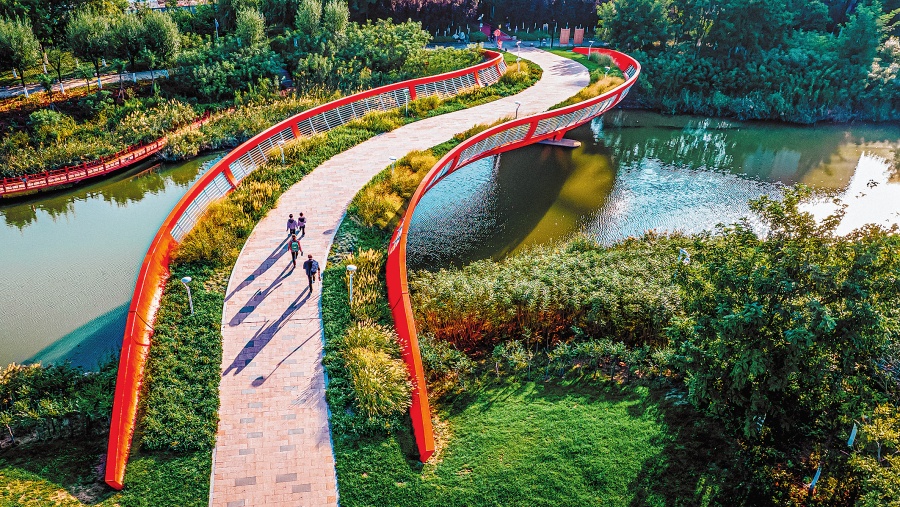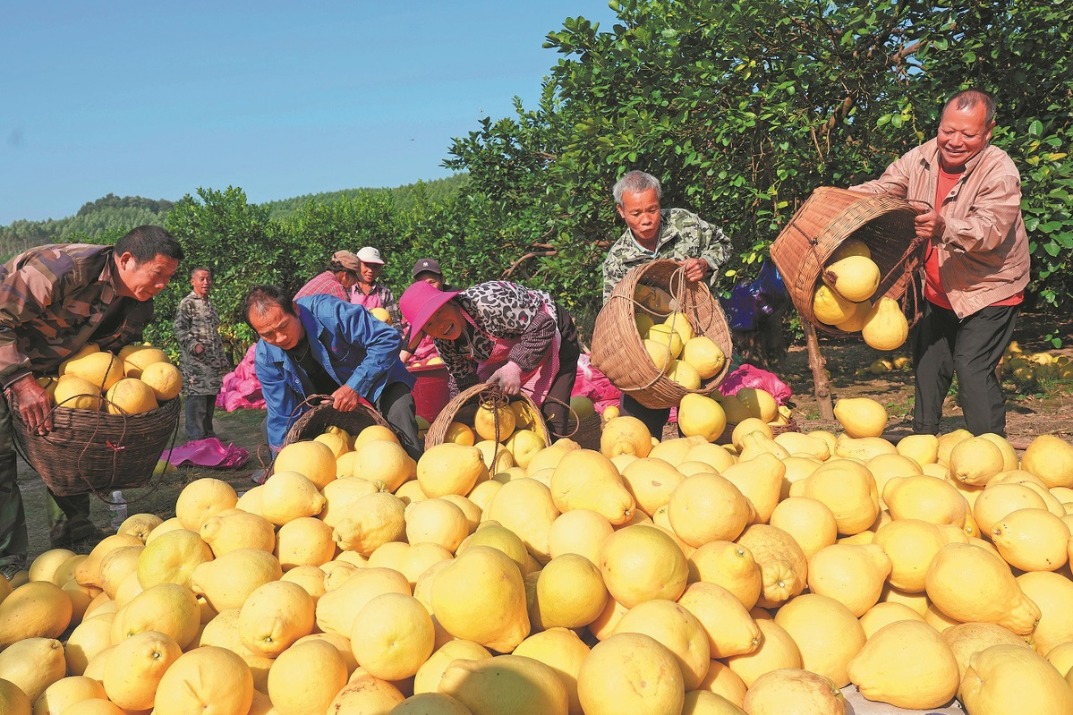Eco-city challenge to inspire innovation
Teams from China and Singapore adapt green technologies to pioneering development area


Since 2008, the builders of the eco-city have been exploring new technologies and approaches for environmental restoration, using scientific innovation to transform the area into a verdant oasis.
Fu Peng, deputy director of the Construction Bureau of China-Singapore Tianjin Eco-City, said that to address the severe saline-alkali land, they employed techniques such as subsurface drainage for salt removal, leaching layers for salt isolation and using imported topsoil for planting.
"We prioritized the use of locally improved mildly saline-alkali soil to minimize ecological disruption in other areas," Fu said.
"For moderate to mild saline-alkali land, we implemented measures including desalination, salt isolation, salt blocking, fertilization, and planting salt-tolerant vegetation to establish native plant communities. Also, we utilized key technologies for rainwater collection and salt leaching to improve the saline-alkali land," he added.
To transform bodies of water, local authorities utilized the natural advantages of Tianjin being a coastal city to expand the water bodies within the area, enhancing circulation and improving aquatic ecosystems.
Designated as one of the "most beautiful rivers and lakes" in Tianjin, Jinghu Lake is the largest scenic lake within the eco-city, merging with the nearby Jiyun River before the river flows into the sea.
The lake was once a 2.56-sq-km sewage reservoir that had accumulated wastewater for 40 years.
Zhang Xinyu, an inspector from the local eco-environment bureau, said, "We treat the soil under the water and will never cease in our efforts in eco-rehabilitation."
Furthermore, to maintain a healthy and stable ecosystem, the eco-city has established a target to grow at least 70 percent of indigenous plant species in the area.























